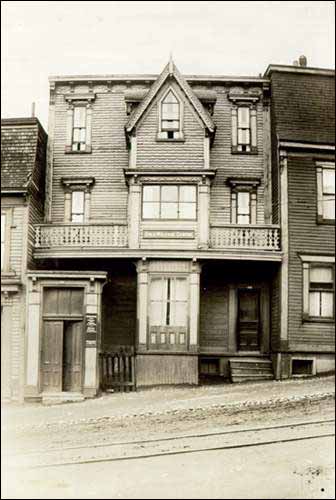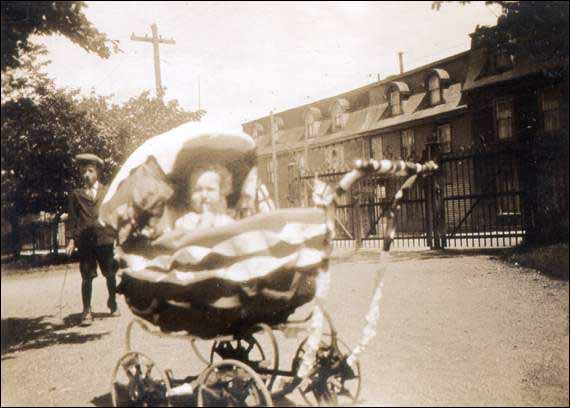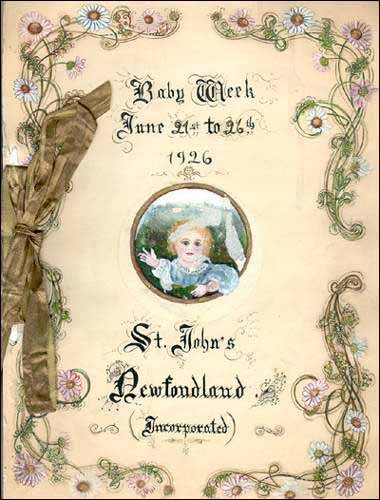Looking Back at Child Protection
From the files of The Gazette February 23, 1995.
Organizations committed to the protection of children are mainly a 20th-century phenomenon in Newfoundland. The early 20th century was a time when Newfoundland had a high birth rate, but an equally high infant mortality rate, an alarming death rate for women giving birth, and an inordinately high number of families without either parent. There were many causes for these high mortality rates, including poor nutrition, lack of milk, lack of medical assistance, poor sanitation and contaminated water supplies.

On July 26, 1917, St. John's Mayor William G. Gosling published a letter in the St. John's Daily News to Lady Davidson, wife of the governor of Newfoundland and president of the Women's Patriotic Association (WPA), in which he asked the WPA to form a committee to plan a child welfare exhibit. His sister-in-law, Adelaide Nutting, a professor of nursing at Teachers' College, Columbia University, New York, arranged for a trained nurse from New York to visit St. John's to give lectures on child care. She stressed the need for an exhibit. To this end Gosling donated his salary as mayor for 1917 ($600). The WPA agreed to administer the exhibit.
With the end of the First World War in 1918, the Women's Patriotic Association was no longer required to provide for servicemen overseas. They were able to turn their attention more fully to children. Earlier in 1918 a second nurse from New York came to St. John's to train three nurses in child care, and a child welfare clinic was opened. In June 1919 the WPA formed a Child Welfare Committee which help provide money for salaries for the three newly-trained nurses. A door-to-door canvass in the St. John's area resulted in $6,000 being raised. In 1921 the Women's Patriotic Association was formally disbanded and reconstituted as the Child Welfare Association.

The Child Welfare Association was a publicly-operated, volunteer-based charitable organization dedicated to improving the health and lowering the mortality rate of mothers and children in the St. John's area. Its services were available to all preschool children at no charge. It was jointly funded by grants from the St. John's municipal council and the national government, and by public subscription, membership fees, gifts and donations. Its work involved public education about nutrition and health care, including home visits and clinics, several of which were established around St. John's. It distributed milk and orange juice to needy families. It sponsored "Health Week" and "Baby Week," which provided information and friendly competition, including perambulator parades. It made use of Waterford Hall, in the west end of St. John's, as a children's hospital for a number of years, and from 1929 to 1934 operated a soup kitchen and clothing distribution centre to help relieve the destitution caused by the depression.
The most important service provided by the Child Welfare Association was in the area of immunization. During its years of operation, thousands of children were inoculated against numerous contagious diseases, diseases which would normally cause large numbers of deaths among small children: polio, diphtheria, whooping cough, tetanus, measles and small pox. It provided these services from its headquarters on Queen's Road and from various clinics it held at public buildings and schools around the city. It also provided orthopedic, dental, nutritional and educational services. In 1934 the government grant was replaced by a building and by the part-time services of a doctor and a number of student nurses, in addition to the CWA's regular nursing staff, which at its peak numbered seven.
The government grant was later reinstated and the association expanded its services to Bay Bulls, Petty Harbour, the Goulds, Torbay, Bauline, Flatrock, Portugal Cove and Mount Pearl.

With the expansion of the Newfoundland Department of Health after Confederation, especially the services offered by the Public Health Division through its public health nurses stationed all over the province, the need for the services provided by the Child Welfare Association began to decline. It continued to play a role in child care until well into the 1970s but its members, many of whom had given many years of volunteer services, particularly as fund-raisers, to its operation, were aware that the Department of Health was making the CWA's work less and less necessary. At its annual meeting in 1976, the 55th year of its existence, the Child Welfare Association voted to disband.
The last president of the Child Welfare Association was Patricia Russell. In 1980 she presented the papers and records of the association that were in her possession to the Centre for Newfoundland Studies. It was by no means the complete records of the association, but it is a tangible record of its work. Included are annual reports, clinical activity reports, monthly reports for most of the 1940s, medical reports, financial reports (1964-1977), some correspondence, circulars including one espousing the merits of baby formula made from goat's milk, recipes, and a scrapbook with a hand-painted cover by Sister Mary Josephine of Presentation Congregation and a series of photographs commemorating Baby Week 1926. A number of additional items, photographs and clippings were presented by Phyllis Godden, who was nurse-supervisor of the CWA from 1942 to 1974, in 1992. Together they provide a glimpse of life in St. John's in a time when the medical services we now take for granted were not so readily available.




